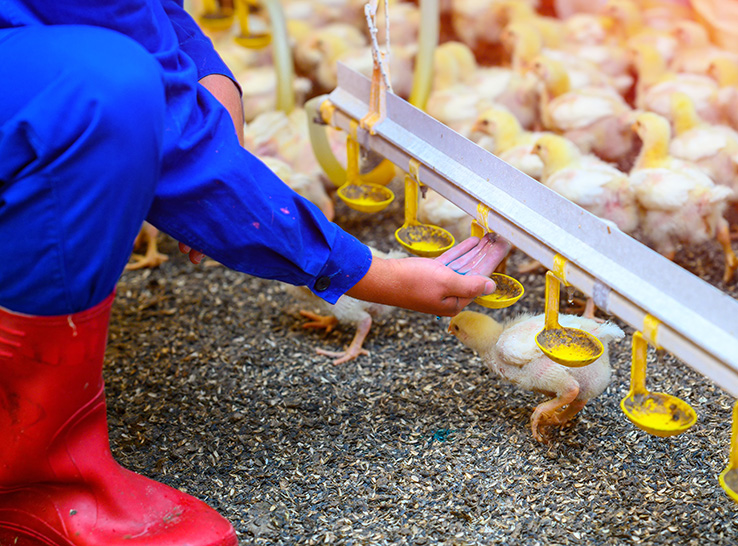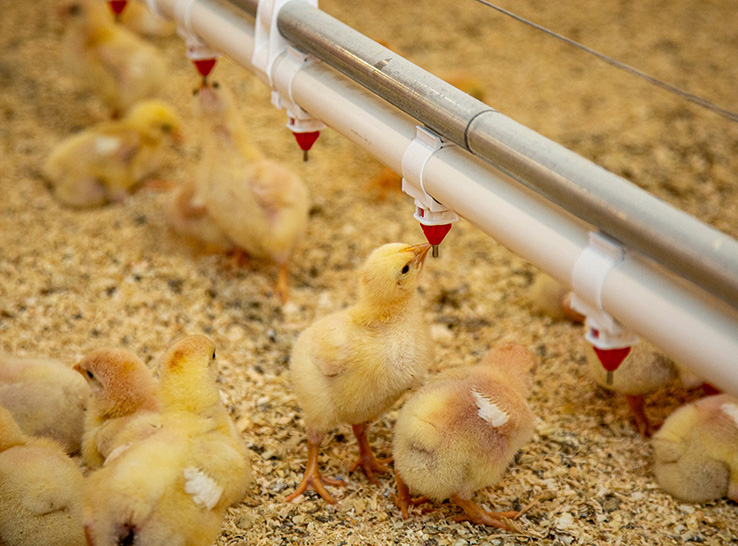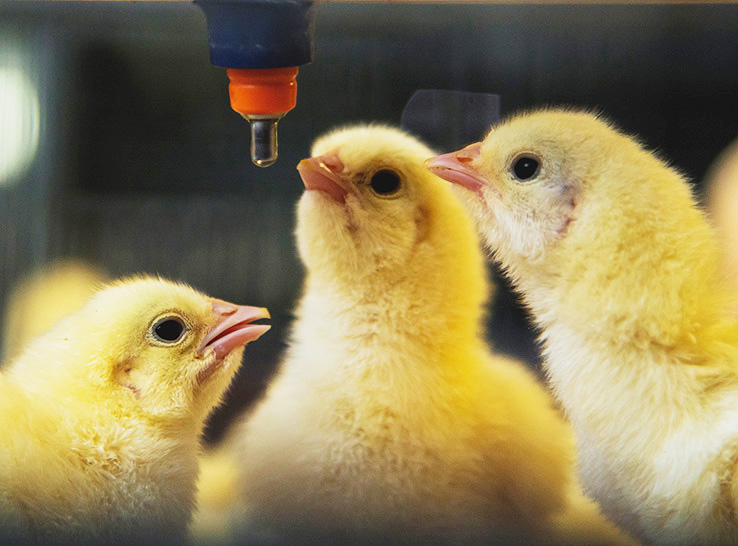Ultrasonic water meters enabled rapid and early identification of potential problems in cage-free layer houses, including feed shortages and water restrictions, according to research presented at the 2024 International Poultry Science Forum by William Strickland, graduate research assistant, University of Georgia.
In today’s complex world of poultry production, maximizing the use of simple indicators is key to alerting managers to potential issues early and keeping operations running smoothly.
One such indicator is water consumption, a critical metric rapidly gaining more attention as new research adds to a robust body of knowledge reinforcing water-usage data as a powerful barometer.
“We are learning more about why water consumption is such an important metric in layer management, reflecting bird health, performance and welfare,” Strickland said.
Strickland noted that layer producers have long used daily water usage as an indicator of production. But today, with greater knowledge from research and improved technology, there is an increasing drive toward more sophisticated and frequent monitoring.
“Our research is showing there can be a lot of value in shifting to this more advanced water-monitoring approach.”
Water as a window on flock status
The value of traditional daily monitoring of water usage has been well-established for good reason, Strickland said. “The more we learn, the more this value is reinforced.”
For example, sudden decreases in water usage can indicate problems with the water supply system, the potential onset of a health issue or missed feedings, since feed intake affects water consumption.
“Water usage and feed consumption mirror each other nicely,” Strickland said. “The absence of one will cause the decrease in consumption of the other. Water-consumption decreases are also seen in birds infected with coccidiosis and in birds with dermatitis.”
Ultrasonic meters add sophistication
However, Strickland noted, the limitation with daily monitoring is that any issues are not found until the daily totals are reviewed the following day. Today, the increased adoption of technology that enables more sophisticated and frequent monitoring is a potential game changer, with ultrasonic water-meter technology leading the charge.
“The advent of ultrasonic water meters is a big step forward, allowing for highly accurate minute-by-minute water-usage monitoring. This brings the opportunity to explore how layer water-usage patterns change over the day so potential problems may be identified and addressed much more quickly.”
Research unveils value
Strickland and colleagues conducted research to further explore the potential of ultrasonic water-meter technology and increased monitoring frequency.
The researchers fitted two commercial free-range layer houses in northeast Georgia with ultrasonic water meters connected to remote-controller and data-logging systems. They collected water-usage data every 5 minutes for 5 months. At the beginning of the study, each house had 10,500 to 12,000 hens that were 46 to 51 weeks old.
The researchers created models for each house — which included a variation in feeding schedule — to evaluate the consistency of the hourly bird water-usage profile of each day. They chose to evaluate layers instead of broilers because the water-usage patterns of cage-free layers are typically very consistent, which, for the purpose of this study, made it easier to identify variations and evaluate the advantages of the monitoring systems.
Among numerous findings, the researchers were able to quickly identify and subsequently diagnose and address any emerging abnormalities. “Once we determined a typical water-use profile and normal variations for each house, we were able to set up a protocol to flag any anomalies,” Strickland explained. “This proved useful in accurately identifying instances of feed shortages, water restrictions and other important issues.”
Among results, the researchers observed that water usage increased linearly by 336% through the day and peaked 3 hours before the dark period. Variability also increased later in the day. The average hourly usage of the first 4 hours was between 1.1-1.2 GPH/1000 birds with standard deviation (SD) between 3.84-5.47, whereas the last 4 hours’ usage was between 4.8-5.1 GPH/1000 birds and an SD of 6.88-10.37.
“When there were no issues present, we saw a very consistent drop followed by a spike in water usage after feeding times in both of the houses,” Strickland said. “And this makes sense — the birds were attracted to the feeder at that feed time, and the act of feeding triggers a subsequent drinking response.”
The findings reinforced that monitoring daily water-usage patterns more frequently offers a strong advantage, allowing deviations to be seen in periods of the day rather than the next day, he said.
“The model structure used in our study may form an outline for how models can be created to analyze water-usage patterns. Further research on the water-usage pattern can enhance our understanding of influencing factors and improve the speed and accuracy of abnormality detection.”






